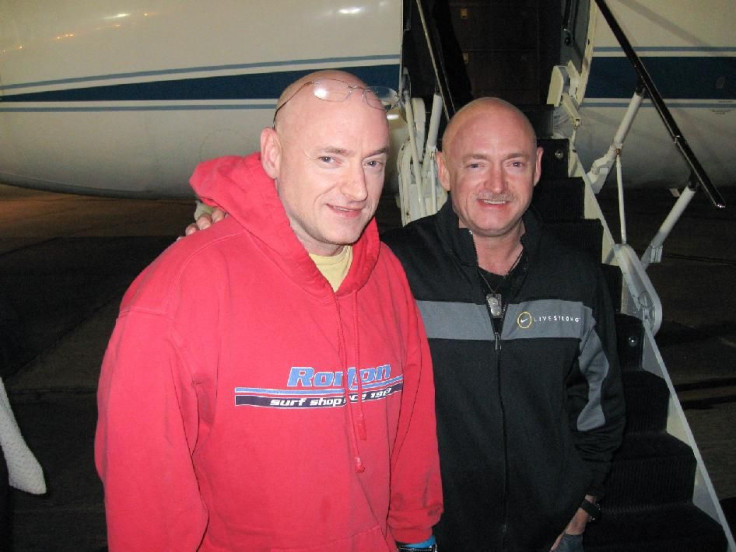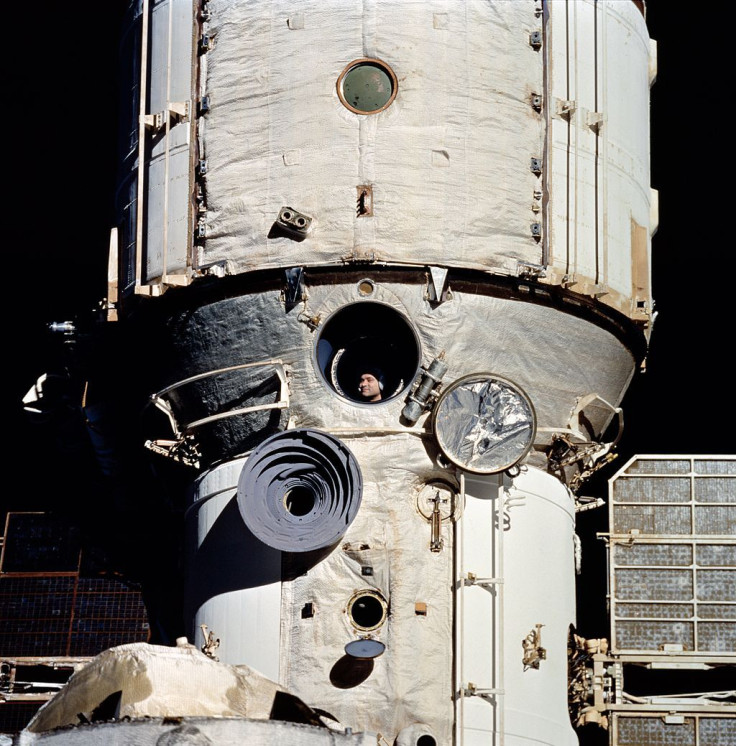The One-Year Crew: Twin NASA Astronauts Scott And Mark Kelly To Reveal Effect Of 365 Days In Space

NASA has the unique opportunity to study the effects of a year in space by monitoring twin astronauts, one of whom will spend a year in space while his brother remains on Earth. In a joint U.S.-Russian mission, Scott Kelly will spend a year aboard the International Space Station with cosmonaut Mikhail Kornienko, while retired astronaut Mark Kelly, Scott's twin, will remain on Earth. NASA will compare any genetic differences between the twins as part of several experiments throughout the mission.
Scott and Kornienko will launch for the space station in March 2015. NASA's Human Research Program and the National Space Biomedical Research Institute have sent out a call for scientific investigations that will be used to compare differences between the 50-year-old brothers. Scott has spent 540 days in space while his brother has spent 54 days in low-Earth orbit over the course of four space shuttle missions. The one-year mission will provide valuable data NASA could use to develop their manned mission to Mars in the 2030s.
See TIME's new cover: The Year Ahead featuring @NASA's Scott Kelly http://t.co/rzwNgj7cM9 pic.twitter.com/uc2lOJgTFg
— TIME.com (@TIME) December 18, 2014"Some investigations may study the impact of exposure to stress, radiation and life in a confined environment on the chemical compounds that tell a human cell what to do and when to do it. This information would be applicable to similar human exposures on Earth and may introduce new ways of thinking about genetic processes based on any genetic differences observed between the Kelly twins after the one-year mission," NASA said.
The space station is already used as scientific lab with hundreds of experiments exploring the effects of microgravity on biology, plant growth, human health and immune systems, as well as technology.

Tentative plans include collecting blood samples throughout the year while other sample collections, such as saliva, will be evaluated based on other investigations. Changes in the eyes, metabolism, body chemistry, cardiovascular capacity, bone density and nervous system can also be studied as part of the yearlong mission, NASA reported.
It will be the first time NASA will send an astronaut on a yearlong mission to space, but several cosmonauts have performed the feat aboard Mir. Valeri Polyakov holds the endurance record for continuous time in space. Cosmonaut Polyakov launched to Mir aboard the Soyuz TM-19 on Jan. 9, 1994, and spent 438 days in space. Cosmonauts Sergei Avdeyev (380 days) and Valdimir Titov and Musa Manarov (365 days) are the others who have spent at least a year in space.

Aside from setting an endurance record, Polyakov's stay aboard Mir led to new insights on how the body adapts to spending extended time in space. A study, "Mental performance in extreme environments: results from a performance monitoring study during a 438-day spaceflight," published in the journal Ergonomics, evaluated the effects of space on Polyakov's mood and mental performance.
"It is concluded that the first 3 weeks of long-term spaceflights and the first 2 weeks back on Earth represent critical periods where adverse effects on attentional processes are to be expected, induced by the demands to adjust to the extreme environmental changes. The stability of mood and performance observed after successful adaptation to the space environment indicates that mental efficiency and emotional state can be maintained on a level as high as on Earth even during extraordinary long-term space missions," reads the study's abstract.
NASA will now use the opportunity of twin astronauts to further evaluate the effects of a year in space. Kelly's previous six-month stay can also be used to determine when possible changes occur and if there is a difference between the first half of the mission and the latter six months.
© Copyright IBTimes 2024. All rights reserved.












